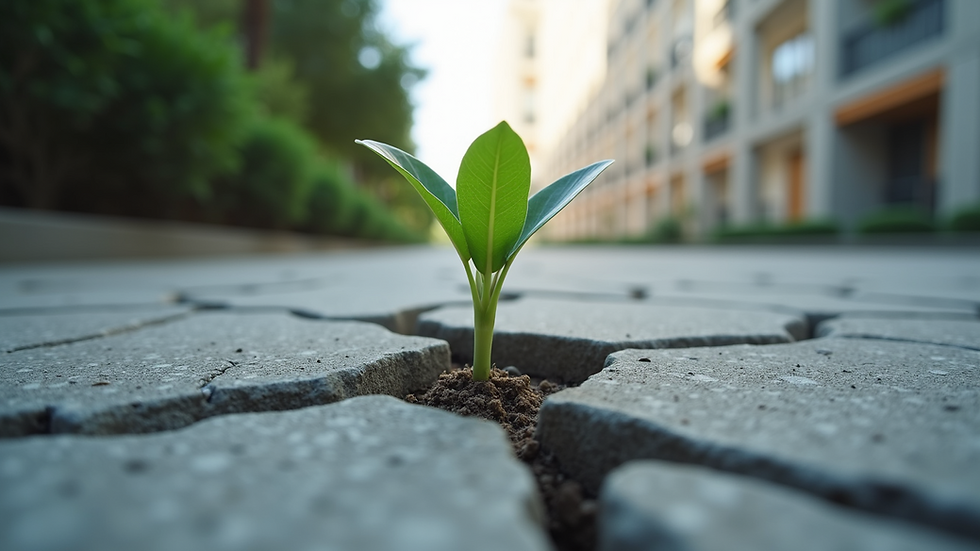Inspiring Stories of Hope and Resilience
- Alexander Restrepo

- Jul 28
- 3 min read
Life often presents challenges that test our spirit and determination. Yet, throughout history and in everyday moments, people have shown incredible strength to overcome adversity. This blog post explores inspiring stories of hope and resilience, offering practical insights and encouragement for anyone facing difficult times. By learning from these examples, you can discover ways to build your own inner strength and keep moving forward.
Building Hope and Resilience Through Real-Life Examples
Resilience is the ability to bounce back from setbacks, while hope fuels the belief that better days are ahead. Together, they create a powerful combination that helps individuals navigate hardships. Consider the story of Malala Yousafzai, who survived a violent attack for advocating girls' education. Despite the trauma, she continued her mission and became a global symbol of courage.
Another example is the community of New Orleans after Hurricane Katrina. Residents banded together to rebuild their homes and lives, showing how collective resilience can restore hope even after devastating loss.
Practical tips to build your own resilience:
Stay connected: Build a support network of friends, family, or mentors.
Set small goals: Achieving manageable tasks boosts confidence.
Practice self-care: Prioritize sleep, nutrition, and relaxation.
Maintain a positive outlook: Focus on what you can control.
Learn from setbacks: View challenges as opportunities to grow.

The Science Behind Building Hope and Resilience
Understanding the psychological and physiological aspects of resilience can empower you to develop it intentionally. Research shows that resilient people tend to have strong emotional regulation, optimism, and problem-solving skills. The brain adapts through neuroplasticity, meaning you can train your mind to respond better to stress.
Mindfulness and meditation are proven techniques to enhance resilience by reducing anxiety and improving focus. Journaling about positive experiences or gratitude can also increase hopefulness.
Actionable strategies to strengthen resilience:
Practice mindfulness daily: Even 5-10 minutes can make a difference.
Reframe negative thoughts: Challenge pessimistic beliefs with evidence.
Engage in physical activity: Exercise releases endorphins that improve mood.
Seek professional help if needed: Therapy can provide tools to cope effectively.

What are the 5 R's of Resilience?
The 5 R's of resilience provide a simple framework to understand and cultivate this vital quality:
Recognize: Identify your emotions and stress triggers.
Reflect: Think about past experiences and how you overcame difficulties.
Reframe: Change your perspective to see challenges as opportunities.
Respond: Take proactive steps to manage stress and solve problems.
Recover: Allow time for rest and healing after setbacks.
By applying these steps, you can build a resilient mindset that helps you face adversity with confidence.
Example: After losing her job, Sarah used the 5 R's to navigate her situation. She recognized her fear, reflected on previous challenges, reframed the loss as a chance to explore new careers, responded by updating her skills, and took time to recover emotionally. This approach helped her find a fulfilling new job within months.

Stories of Everyday Heroes: Finding Strength in Small Acts
Not all inspiring stories come from famous figures. Everyday people demonstrate hope and resilience in remarkable ways. For instance, a single mother working multiple jobs to provide for her children, or a teacher adapting to remote learning during a pandemic, show how determination can overcome obstacles.
Volunteers who help rebuild communities after natural disasters or neighbors who support each other during tough times also embody resilience. These stories remind us that strength is often found in small, consistent actions.
How to cultivate resilience in daily life:
Celebrate small wins: Acknowledge progress, no matter how minor.
Stay flexible: Adapt to changing circumstances with an open mind.
Practice gratitude: Focus on positive aspects of your life.
Help others: Acts of kindness boost your own sense of purpose.
Embracing Hope and Resilience for a Brighter Future
Building hope and resilience is a lifelong journey. It requires patience, practice, and sometimes support from others. By learning from inspiring stories and applying practical strategies, you can develop the inner strength to face challenges head-on.
Remember, resilience does not mean avoiding pain or difficulty. Instead, it means growing through adversity and emerging stronger. If you want to explore more about the power of hope and resilience, consider reading stories that highlight how individuals and communities have transformed hardship into opportunity.
Final recommendations:
Surround yourself with positive influences.
Keep learning and growing.
Be kind to yourself during tough times.
Stay hopeful and keep moving forward.
Your story of resilience is waiting to be written.



Comments